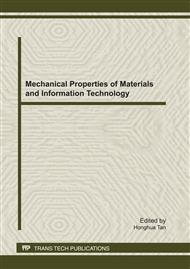p.416
p.421
p.429
p.436
p.439
p.444
p.451
p.456
p.461
Preliminary Study of Incipient Electrical Impedance Change and Detection of Brain Tissue after Ionization Injury
Abstract:
Large doses of ionizing radiation can cause acute radiation disease, which is likely to lead to death in severe cases. Secondary injuries may result in major illnesses such as extensive hemorrhage, anemia and DNA mutation. Therefore, early detection of ionization injury and its degree is of great significance to treatment, which has also been the goal of radiology domain. Some evidence has been found that normal brain tissue has lower electrical impedance than ionization injured brain tissue. Although resistivity based on impedance measurements needs further investigation, electrical impedance could be used as an indicator for incipient changes in brain tissue. In this paper, we propose a systematic demonstration of electrical impedance imaging technique used for the detection of ionization injury of brain tissue. By comparing normal brain tissue of rabbits (control group) and ionization injured brain tissue of rabbits (experimental group) we observed that the experimental group showed a striking contrast with the control group. During a span of twelve hours the one dimension impedance of the former group has ascended remarkably and in two-dimensional images the location and area of the injury can be observed. The results of the completed experiments suggest that electrical impedance [1]tomography (EIT) may become an effective technique to detect incipient ionization injury.
Info:
Periodical:
Pages:
439-443
Citation:
Online since:
September 2011
Authors:
Price:
Сopyright:
© 2012 Trans Tech Publications Ltd. All Rights Reserved
Share:
Citation:


